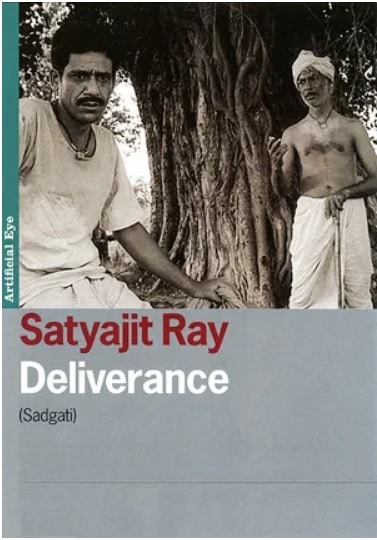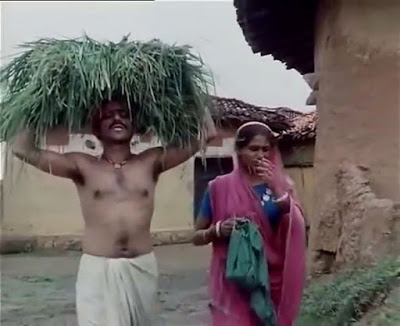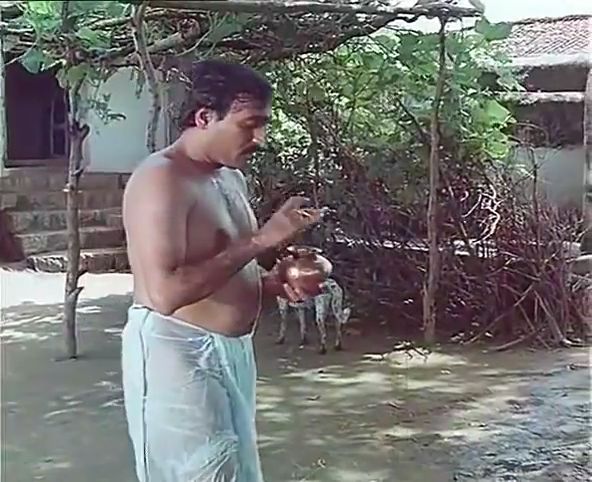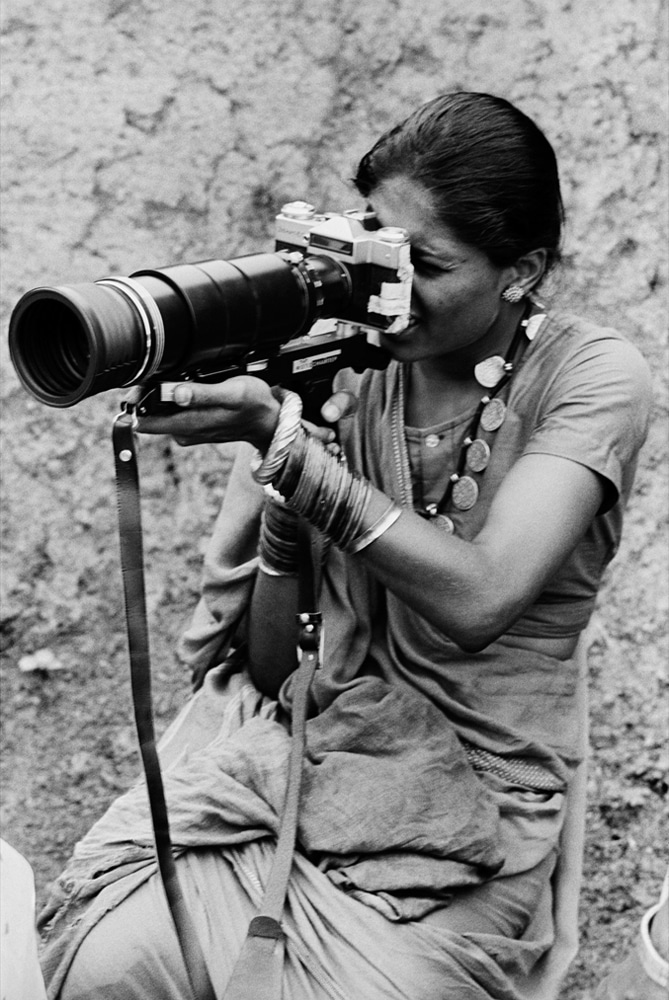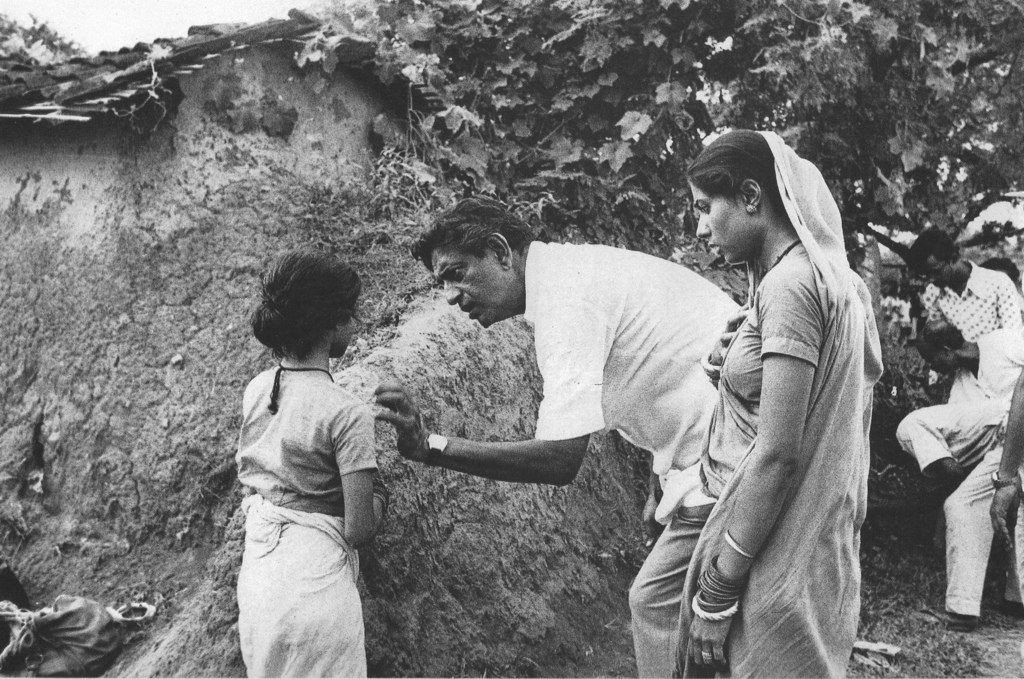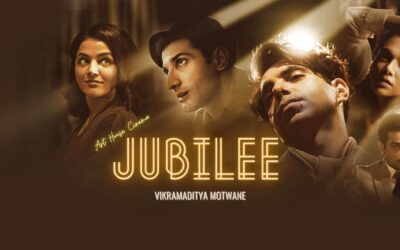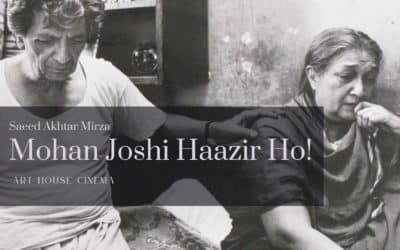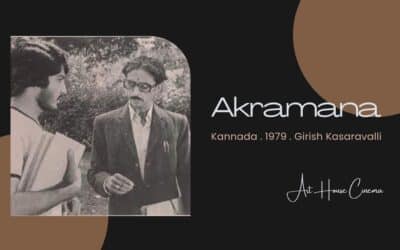Sadgati is a 1981 Hindi film directed by Satyajit Ray. Based on a short story of the same name by Munshi Premchand, this film is a grim reminder into the harsh realities of the Indian society and the injustice perpetrated by its cruel caste system that exists to date.
Sadgati was made for television and produced by Doordarshan. Almost forgotten, this mirror to the society is in a way a reminder of our own humane-ness (or the loss of it).
CAST
- Om Puri – Dukhi
- Smita Patil – Jhuria
- Mohan Agashe – Ghasiram
- Gita Siddharth – Lakshmi
- Richa Mishra – Dhania
CREW
- Direction – Satyajit Ray
- Story – Munshi Premchand
- Script – Satyajit Ray, Amrit Rai
- Screenplay – Satyajit Ray
- Cinematography – Soumendu Roy
- Editing – Dulal Dutta
- Art – Ashoke Bose
- Music – Satyajit Ray
STORY
Dukhi (Om Puri) and his wife Jhuria (Smita Patil), a Dalit outcaste couple depend on the village priest Ghasiram (Mohan Agashe) to fix an auspicious date for the wedding of their daughter Dhania (Richa Mishra). The priest promised to perform this task in exchange for free labour, for Dukhi to slave at his house for a day doing household chores.
Already unwell and weak due to a recent illness, Dukhi still agrees against the wishes of Jhuria and goes to Gasiram’s house. After the cleaning up is done, he is asked to chop a huge block of wood, a task that seems impossible for one person to achieve. He keeps trying to chop the wood with his axe, his misery increasing by every blow and driven by the fear that the Brahmin would not tell a good date if the work is not accomplished.
Working in harsh sun, hungry and sick, Dukhi collapses on the ground and dies. His body lies close to the path used by the Brahmins on way to the village well and they cannot go that way for the fear of becoming impure. Dalits refuse to carry the body for fear of the police. A huge predicament for Ghasiram!
Late in the evening, when no one is around, Ghasiram ties a rope around the ankle of the dead Dukhi and drags it away to the village limits. He then comes back and sprinkles holy water on the spot where the corpse laid to clean it of the untouchable’s touch…
A worried Jhuria as an ailing Dukhi departs for Ghasiram’s house. He has been sick for days and gets dizzy with weakness. However, the work must be done or the wedding will be jinxed.
The story of Sadgati in six pictures. Credit: The Film Sufi
Commentary
Ray called Sadgati a deeply angry film, “… not the anger of an exploding bomb, but of a bow stretched taut and quivering…”. The scene where Dukhi is chopping at the wood, his anger intensifying at each blow, and the compulsion to keep going perhaps best represents this anger.
This film is a vicious indictment of the caste system, a social structure based on the injustice that relegates the oppressed to the level of cattle, to die and live for their masters. However, this system does not spare the oppressors as well, with each act of cruelty they lose some of their humanity bit by bit. By the end of it, the tables are turned and the Brahmin cannot stick to the lofty ideals of superiority and purity anymore, he becomes one of them to save his skin. The fates of both Dukhi and Ghasiram are hence intertwined in their fall.
This film is another testimony to why was Ray considered the master that he was. He got a story written by one of the greatest writers of India and transformed into cinema it is impossible not to be moved by. While Ashoke Bose brings the ambience of a decaying village to life, Ray captures the essence of
Om Puri, while cutting grass sitting on his hunches, sweeping the floor at the priest’s house or attacking the wooden log with
If Om Puri shone in his role, why would Smita Patil fall behind? As Jhuria, she gets under the skin of the character and carries out her role with distinction. Mohan Agashe as the reluctant antagonist is brilliant as well.
A photograph of Smita Patil trying her hand at the camera during the shooting. Photo – Nemai Ghosh
Sadgati is an angry film as stated before and it is impossible for a sensitive soul to not get affected. The moments like
Ray explaining a scene to Richa Mishra (Dhania) while Smita looks on. Photo – Nemai Ghosh
Awards
- Special Jury Award, New Delhi (1981)
Reference
- Sadgati Hindi Story [Bharat Darshan]
- Sadgati [IMDB]
- Sadgati [Wikipedia]
- Sadgati: A Lost Chapter in the History of Hindi Cinema [Open Road Review]
- Sadgati (The Deliverance) [Satyajit Ray]
- Sadgati (1981) [The Hindu]
- Sadgati – Satyajit Ray [The Film Sufi]
Satyajit Ray, brooding, during the filming of Sadgati. Photo – Nemai Ghosh


